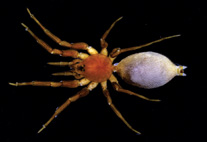Abstract
During the exploration of the enchytraeid fauna in forests and grasslands of Hungarian flat areas, a small enchytraeid species, Hemifridericia bivesiculata Christensen & Dózsa-Farkas, 2006, was found unexpectedly. This species was known previously only from one single location, Bank Island in the Canadian archipelago, and was presumed to be endemic. Here, the distinctive features of the two Hemifridericia species are described based on detailed morphological analyses, which were supported with molecular methods. The results demonstrated that the two Hemifridericia species are very similar morphologically, but can be clearly distinguished from each other by the presence or absence of the oesophageal vesicles and the shape of the brain. Some additional differences were observed between the Hungarian material and the type specimens of H. bivesiculata. The two species were unequivocally separated based on the studied molecular markers, the mitochondrial cytochrome c oxidase subunit I (CO1) gene, the nuclear histon 3 (H3) gene and the nuclear ribosomal ITS region.

